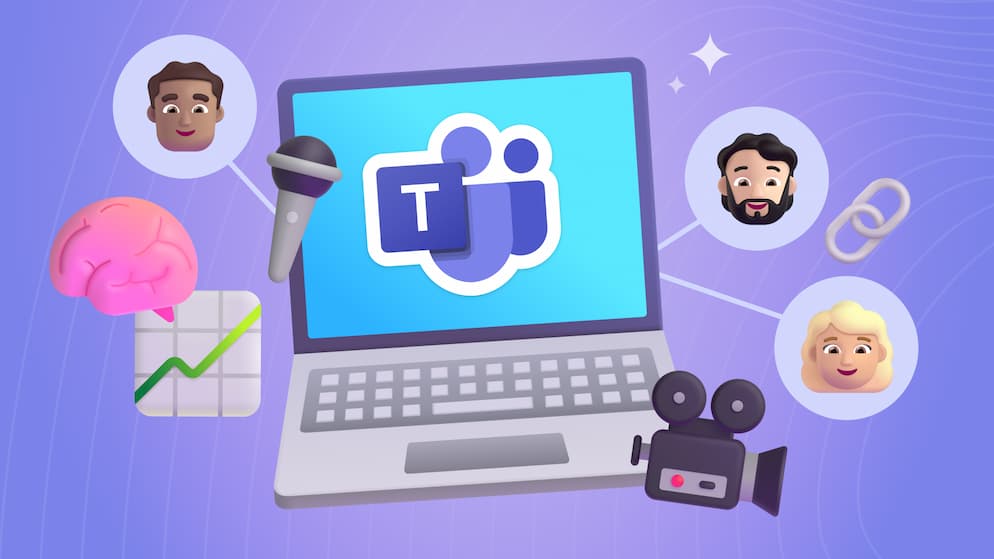5 Ways to Make Collaboration with People Outside Your Organization Easier
We know how collaborating with people outside your organization can be difficult, messy, and stressful! In today's blog, we're going to give our five tips that will make that process a little easier on both your organization and your customers 😁
If you want successful projects and happy clients, you have to stop making it difficult for customers to work with you. The more hoops you place for a customer to jump through, the more inefficient the whole process becomes. Inefficiency leads to frustration. No one wants to feel like their time is being wasted.
In today's blog, we're going to break down how to make work between your organization and your clients seamless 🙌
Every Touch Point with a Client is an Opportunity to Reduce Friction and Create Connection.
From how they pay you to how they receive meeting invites, there’s always an opportunity to create an intentional experience that makes it easy for the customer to jump onboard and work together with you.
.avif)
Collaborating with external contacts like clients and partners has always been tricky. You're usually not on the same systems or platforms; and of course, there's the issue of access to files. This leads people to email documents around, which we’ve talked about before here.
Making it easy to collaborate between a client and your organization will free you both up to focus on creating and building something together.
1. Understand the Power of Smooth Logistics
The key is to embody the correct mindset on how you approach working together. When you approach the opportunity to collaborate with someone outside of your organization, it’s best to look for ways you can remove barriers and make communicating and sharing documents effortless. This makes your job easier and frees up the other party to focus less on “how” to work together and more on the work at hand. Understand the value of figuring out the logistics of working together. Less time shuffling papers, more time creating value together.

SELF ASSESSMENT
Is your business getting full value from your M365 subscription?
Billions of dollars are wasted each year on underused subscriptions. Take 3 minutes to find out where your tools are driving results, and where they’re holding you back.
Find Out Now

Is Team Communication Holding You Back?
Find Out in Just 2 Minutes.
Take our quick scorecard to uncover communication gaps and hidden barriers within your team.
2. Put Modern Tools to Use
Modern tools have features that allow you to invite external users to work with you directly. Use these as much as you can.
Modern tools for external collaboration (my favorites!):
- Slack — Setting up Channels with External Users
- MS Teams — Shared Channels
- MS Teams (Office 365) — Guest Users (we have a blog about guest user access here!)
.avif)
Slack, Setting up Channels with External Users
If both groups use Slack, you can create a “Slack Connect” channel to share with external users for convenient and fast communication - it’s so much better than emailing back and forth.
Microsoft Teams Shared Channels
My favorite option is creating a shared channel - this requires tenant admin permissions and works great for smaller size organizations. You can allow a shared tenant experience - sharing files, editing documents together and chatting right in the Teams channel.
MS Teams (Office 365) Guest Users
Another option within Teams is setting up a shared folder and sharing that folder with the specific external contact. This step does require the external contact to verify their email address to access (one hoop) but is fairly simple and easy to follow. This also allows the client to save files and documents in that file, creating a two-way sharing system.
+ Added Bonus with Teams Shared Channel and/or Guest Users
- Solves the problem of sharing a file that is too big to email (such as a meeting recording)
- Creates a more secure way of sharing documents than emailing them as attachments
3. Schedule Meetings with Ease
.avif)
Using Outlook to schedule meetings works great internally. You can see when attendees have open availability on their calendars and can coordinate effortlessly to find a time that works for everyone (well maybe not effortlessly with a busy team, but at least you’re not flying blind). With external contacts, Outlook doesn’t allow you to see calendar availability. Here’s where it’s wise to turn to a modern tool and put it to good use. One we like to use is Calendly, there are a number of options out there.
A modern scheduling tool like this integrates with your organization’s calendar data and can align multiple team members’ schedules to only offer time slots to the client that works for all the specific team members. The clean, no-fuss scheduling page feels like a breath of fresh air to clients who are used to shooting emails back and forth to maybe find a time that works for all parties.
4. Take your Training to the Next Level
When you offer training to external contacts, it’s important to choose a modern tool that is designed to facilitate training easily, especially with a large group. There are various meeting formats that help you control the outcome and facilitate the training, such as MS Teams – Webinar Events. These are just a few examples of using modern tools to your advantage to make it easier for a client to work with you.
5. Onboard Your Client to Your way of Working
While your way of working might seem obvious to you, a short walkthrough at the beginning of a relationship can go a longggg way. Something to remember is that although you may use these tools day-in and day-out, that doesn’t mean your client will understand how to at first glance.
Informative communication goes a long way when first introducing a new tool with clients. It can be as simple as an email before a meeting including a few best practice tips or a bulleted list of instructions on how to access a shared folder. Remember, make it easy on them to get up to speed and start reaping the benefits of modern tools.
Effortless Collaboration = Better Relationships
Instead of making your customers work hard to get their feedback to you, set up a process that makes it seamless to communicate and collaborate together. When a customer feels heard and can get their ideas across, this builds trust and creates stronger relationships.
Before you launch into your next client engagement or vendor partnership, consider how you can use modern tools to make it easier for your customer to work with you. You’ll both be thankful you did!







.jpg)







